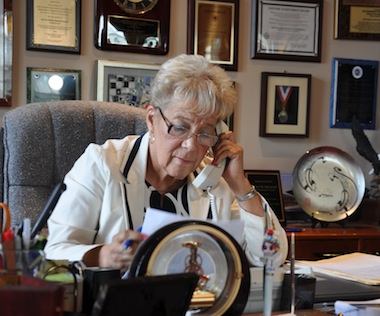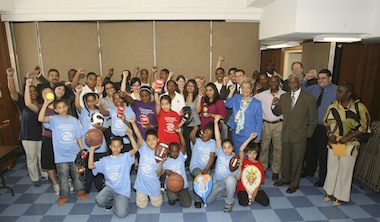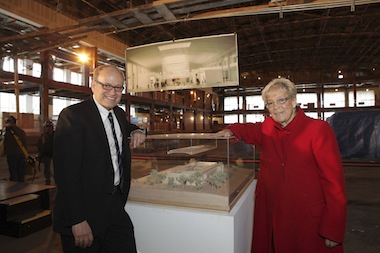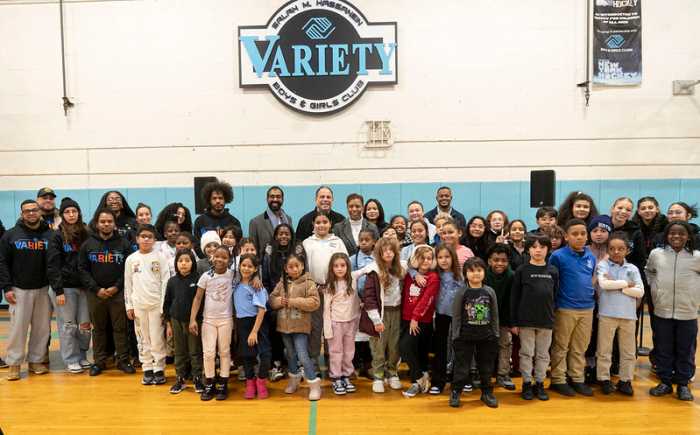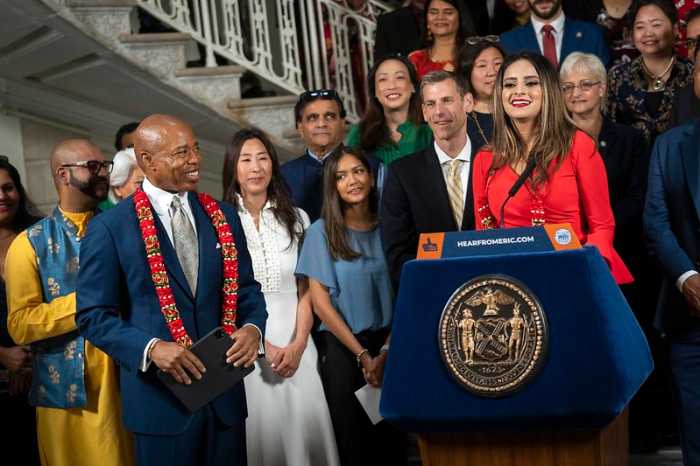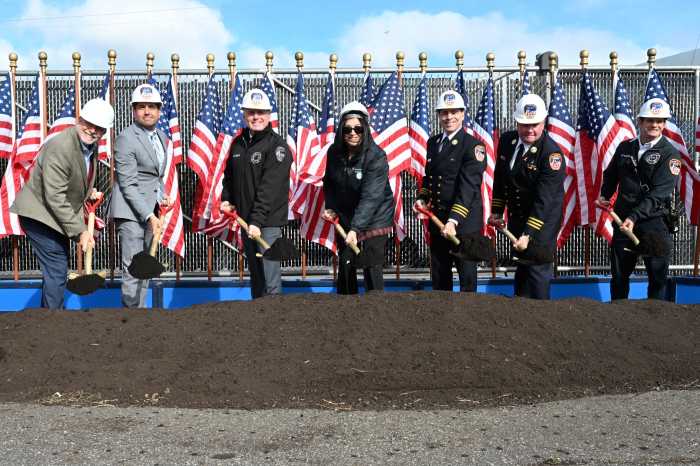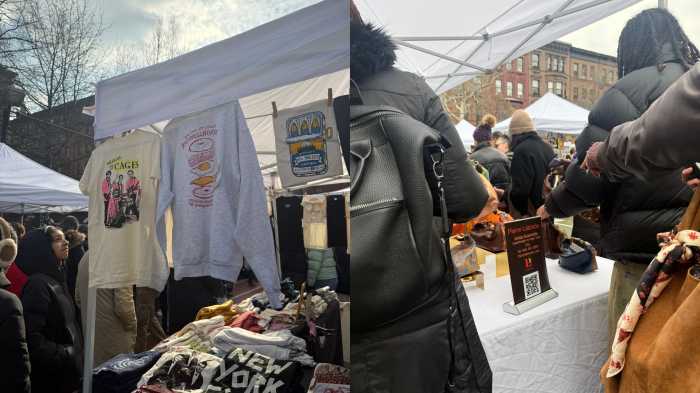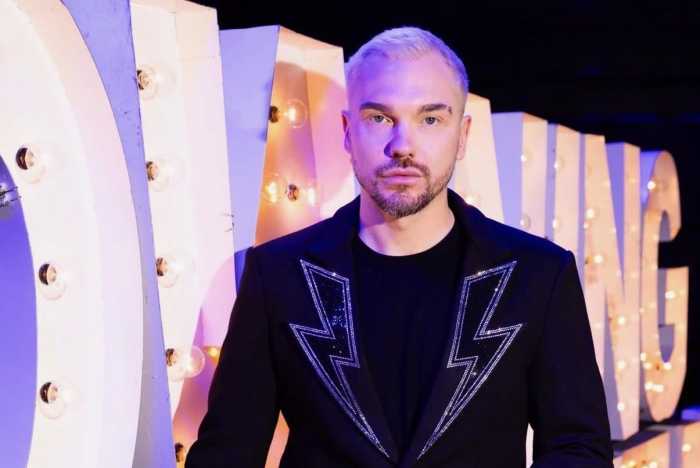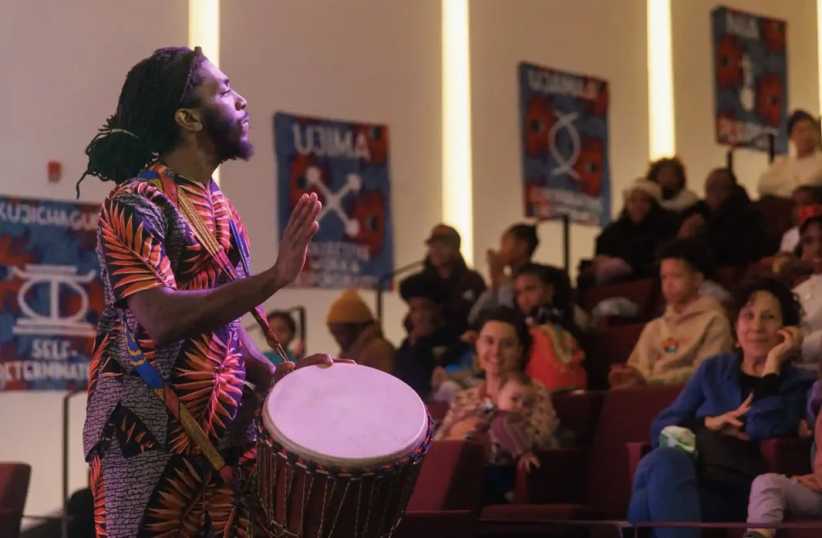Borough President Helen Marshall has always seen herself as a public servant.
Her chief of staff, Alexandra Rosa, said her boss has worked for every person she represents.
“She never forgets where she came from and the fact that it’s about people,” Rosa said. “Always about people.”
Marshall, the first African-American Queens Borough President, will exit office in December because of term limits. She leaves behind a legacy based on the ideas of cultural understanding and tolerance.
When she came into office in January 2002, the city was still recovering from the September 11 attacks. People and religions were being misunderstood in the wake of the terror. Marshall established the Queens General Assembly — a tribute to the United Nations, which she does not fail to mention began in Flushing Meadows-Corona Park. The General Assembly has promoted understanding, down to the significance behind a culture’s holidays.
Something like this is particularly important in the nation’s most diverse county, she said.
“There’s a feeling among all of the members [that] this is their country, too,” Marshall said. “And I mean that it’s a really nice feeling they have about everything. If they have a problem, they give us their problem, we tackle it.”
Councilmember Karen Koslowitz, who was deputy Borough President from 2002 to 2009, said Marshall’s timing on establishing the General Assembly, and the details it worked on, came when people needed it most.
“That was a magnificent thing to bring all the different ethnicities together to learn about the holidays and the food,” she said.
Marshall, like many in the borough, was not born in Queens. But she has still made it her home. She and her family moved here from the Bronx in 1957, first settling in Corona, and then East Elmhurst.
She became involved in the civil rights movement, Rosa said, and would speak to Malcolm X when the activist lived in Elmhurst shortly before his death in 1965.
The desire for better understanding has been a strong part of Marshall’s tenure, and remains an active one to this day. Marshall has hosted LGBT Pride Day every year since coming to office. It was one of the civil policies she saw the borough needed. Her most recent one coincidentally took place on June 26 — hours after the Supreme Court ruled against the Defense of Marriage Act.
While she has been instrumental in bridging gaps in the borough, Marshall has also worked on areas Queens needs to promote productivity. In total, her office has given $676 million in capital investment to projects throughout the borough — with a focus on healthcare, libraries, parks and cultural institutions.
HELEN HELPS HOSPITALS
Five Queens hospitals have closed during Marshall’s tenure, something Koslowitz said was difficult for the borough president to see happen.
Before four of those hospitals closed, however, Marshall’s office released a report in 2006 that said Queens was already in a healthcare crisis. The report showed what areas were in the most need and laid out a plan to combat cutbacks.
Paola Miceli, her director of Health and Human Services, said Marshall’s office has worked with the existing Queens hospitals to ensure residents have the same access to care without overcrowding.
“Looking at 2006 and knowing we were already in a crisis and then having hospitals close after that certainly only exacerbated what we already thought,” Miceli said. “The good news is since that time, we’ve been able to come around. […] We’re not where we need to be, certainly by any means, but we’re in the process of getting there.”
The remaining Queens hospitals have also been active in expanding and dealing with the overflow of fewer hospitals.
“The existing institutions have stepped up to the plate,” Miceli said. “They have done incredible work to make themselves right sized.”
Over the last 12 years, Marshall’s office has allocated more than $20 million to Queens health centers. Part of the funds have gone toward expanding emergency rooms in order to accommodate the overflow from hospital closures.
She also worked with elected officials at the federal level, Miceli said, to fight Medicaid cuts. But Marshall also saw a borough-wide need for primary care offices where some had been lacking. Her office has helped establish or expand “urgi-centers” in neighborhoods throughout Queens where a primary care doctor might be in shortage, Miceli said.
These offices have the feel and speed of an emergency room, but are less costly for the government to reimburse.
“It’s better for the patient, certainly it’s a much more patient-friendly environment, especially for the children,” Miceli said. “We’ve had the opportunity to have the borough view that no one else has really had the opportunity to have. We can look from community to community to see what the gaps are, where the gaps are.”
LIBRARIES, PARKS AND CULTURE
Marshall has spent the last 30 years as an elected official, first in the Assembly, then City Council and finally Borough President.
She was the inaugural chair of the Council’s Higher Education Committee and stood up to proposed CUNY cuts by then-Mayor Rudolf Giuliani.
Long before that, however, she was an early childhood educator and an active PTA member. She carried her work as a teacher into her years of public service and into Borough Hall. Marshall was also the first executive director of the Langston Hughes Library.
“One of the things I have been working at for a long time is the schools,” she said. “We wanted to make sure that we had a seat for every child. We have so many children and we can’t let any of them go without an education. And so that’s a very big investment.”
A large part of that policy has been fighting for funding for libraries — and building new ones. An example Rosa drew upon is the new Far Rockaway branch of the Queens Public Library, an $18 million project completely funded by Marshall’s office.
While libraries offer a slew of educational programs for all ages, Rosa said Marshall believes them to be a center for growth in communities.
The library, which will replace the one currently on Mott Avenue, will be a boost as the area attempts to establish itself as a commercial strip, Rosa said.
“This is a real shot in the arm,” she said. “Especially along Mott Avenue, where we’re trying to do some economic development. We do this not only for the sake of the library, but also to supply some economic support to the community.”
Marshall’s fight for libraries has been recognized by the Centers for an Urban Future, which cited her work in its publication Branches for Opportunity.
“Queens has succeeded in large part because the libraries have been a priority of local elected officials, especially the borough president,” said the Centers for an Urban Future. “Over the last decade, Borough President Helen Marshall has steered more money toward library projects in her borough than the other four borough presidents combined.”
Rosa said Marshall fought for parks and cultural institutions with the same idea of community in mind.
Marshall credits her predecessor, former Borough President Claire Shulman, for laying the ground work of the cultural scene. Running with Shulman’s work, Marshall doubled the size of the Queens Museum of Art and the Museum of the Moving Image. She also restored funding to the Jamaica Performing Arts Center.
BOROUGH OF BOOM
When Marshall came into office 11-and-a-half years ago, the landscape was quite different.
McMansions were popping up in quiet suburban areas. Hunters Point and Long Island City were still scattered with closed factories and had little economic life left. Shea Stadium was a mainstay and the AirTrain was headed down an unknown path.
But after years of rezoning and luring large projects to Queens, the borough is booming.
More than 40 neighborhoods have been rezoned since Marshall came into office, according to Irving Poy, director of Planning and Development under Marshall. This has preserved the character of suburban neighborhoods, while allowing other areas to thrive.
Downtowns such as those in Long Island City, Jamaica and Flushing have also grown since Marshall came into office. Poy said Marshall looked at these areas, already accessible by mass transit, and looked for opportunities for them to grow.
“I think the fruits and the planning of that rezoning are being seen today,” Poy said. “Each one of these neighborhoods at its own speed are developing new communities, new uses.”
While Marshall has wanted the borough to thrive, Poy said she makes sure every voice is heard in the rezoning process. Her staff attends every rezoning meeting, he said, and will relay any the concerns of any resident who might be impacted by a project to the proper agency.
“The borough president has included those things in her recommendations [so] that City Planning can go out there and reexamine it and consider what they are proposing,” he said. “And they’ve made adjustments, asking to reconsider. So those are the little things that go unnoticed, but if you live on that block, it makes a difference.”
A borough president is required by the City Charter to give a recommending vote in the Uniform Land Use Review Process (ULURP) for projects affecting the borough.
Marshall has been supportive of development, her staff said, but also fair. She recently recommended that the U.S. Tennis Association go through with expansions to the National Tennis Center only it agrees to return parkland taken up in the project. Returning the 0.68 acres in the expansion was originally not included in the plan.
“Originally, they weren’t going to replace that parkland,” Poy said. “But hearing it from the community and just understanding it from her point of view, that was something that came into consideration — that there should be replacement of the park.”
THE QUIET BEEP
Marshall’s staff has said she stays relatively humble in her role and views her work strictly as a public servant.
Rosa pointed out that when Marshall cites the success of a project, or a significant amount of funding, she speaks as a collective group.
“She considers herself first and foremost a public servant, and that’s the way she approaches allocating capital dollars,” she said. “When she talks funding a project, she never says ‘I funded this.’ It’s, ‘We funded this.’”
Dan Andrews, her chief of staff, said many people view the borough president’s role as nothing more than a ribbon cutter, not realizing how much the county leader puts into each and every project.
“Many reports don’t break down that funding, and there’s no indication that the lion’s share of a project came from the borough president,” he said.
In six months, there will be a new borough president — one of five candidates who are still in the race. Familiar with all the candidates, Marshall said there is little advice she can give to any of the would-be beeps.
“Knowing the people who are running,” she said, “I think some of them might already have some ideas of what they want to do, because you don’t just become the borough president. That means you’ve had some background and understanding in what makes this borough tick. You’ve just got to remain faithful to Queens.”
RECOMMENDED STORIES

